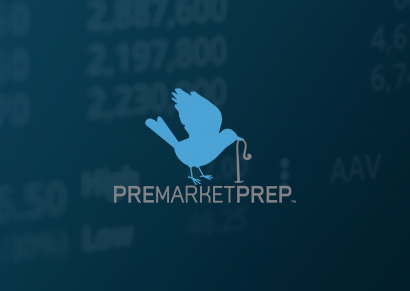In the stock trading world, one of the less focused-on aspects to examine is the buy and sell imbalance. These imbalances, driven by various factors, often provide an opportunity for savvy traders to gain an edge in the market. Seasoned vets Dennis Dick and Joel Elconin recently went through a few examples of using imbalances on the PreMarket Prep show on June 1, but for those who prefer to read, let’s dive into the concept and how you can leverage it in your trading portfolio.
There are two times each day that imbalances occur: at the open and at the close. Due to high frequency trading and other automated bots employed by many large market participants nowadays, a trading edge is a lot smaller and harder to find at the open, as opposed to closing imbalances. For the rest of this article, we’ll focus on closing imbalances.
Understanding Buy & Sell Imbalances
Institutions or individuals may place Market-On-Close (MOC) orders or Limit-On-Close (LOC) orders, indicating their intention to buy or sell a particular stock at the close of the market. These orders collectively result in buy or sell imbalances which are then published to the overall market 10 minutes before the close. These imbalances can be significant enough to push stock prices around in a meaningful way.
As Dennis mentioned on the show, a large buy imbalance in Tesla might push the price up significantly in the last few minutes of trading (almost +2% on May 31). Similarly, a huge sell imbalance in Apple could drive the price down (around -1% on May 31). While these movements may initially seem sporadic, they’re actually off of these imbalances.
Leveraging Imbalances in Trading Strategies
Many traders have developed strategies to take advantage of these imbalances. One such approach involves using LOC orders. If you see a big buy imbalance in a particular stock, you might place a short LOC order at your price. If your LOC is below the closing price, you’ll get executed on the closing print.
This strategy hinges on the fact that such sharp movements often fade – they are typically not a result of changes in the fundamentals, but due to order flow reasons. Hence, going against the move rather than along with it is usually more profitable.
Let’s say the closing price for Tesla, driven by a large buy imbalance, was $203.93. You might have your LOC order around $203.25 or $203.50 to short. You get filled at $203.93, and the price (nearly) immediately comes back down a bit, validating your strategy.
Moreover, it’s essential to be aware of the timing of these imbalances. Imbalances can have the most significant impact at the end of the month, the end of the quarter, and the third Friday of the month, which are typically the days when institutional investors rebalance their portfolios.
Understanding Imbalance Flips
While using imbalances in trading strategies, you must be aware of imbalance ‘flips.’ At times, a stock with a large sell imbalance can flip to a buy imbalance and vice versa. This happens when the order gets oversubscribed. For instance, a stock might have 3 million shares to sell, but if institutions decide to buy, say, 5 million shares, it could flip from a 3 million sell imbalance, to 2 million buy imbalance.
Playing the ‘fade’ – going against the imbalance – can sometimes be safer because if the imbalance flips, and you’ve already placed your trade, you could get caught in a significant price movement in the opposite direction.
Accessing Imbalance Information
Information about imbalances can significantly inform your trading decisions near the open or close of the regular session. However, it’s essential to note that not all brokers provide this information. You’ll need to subscribe to the imbalance feed or use trading software that offers this data. Some examples include Interactive Brokers and WeBull.
Understanding and leveraging imbalances can give you an edge in stock trading. But, like any trading strategy, it’s crucial to thoroughly research, understand potential risks, and test it out before implementing it in your trading routine. Remember, trading is not only about knowledge but also about timing, execution, and managing risks effectively.




